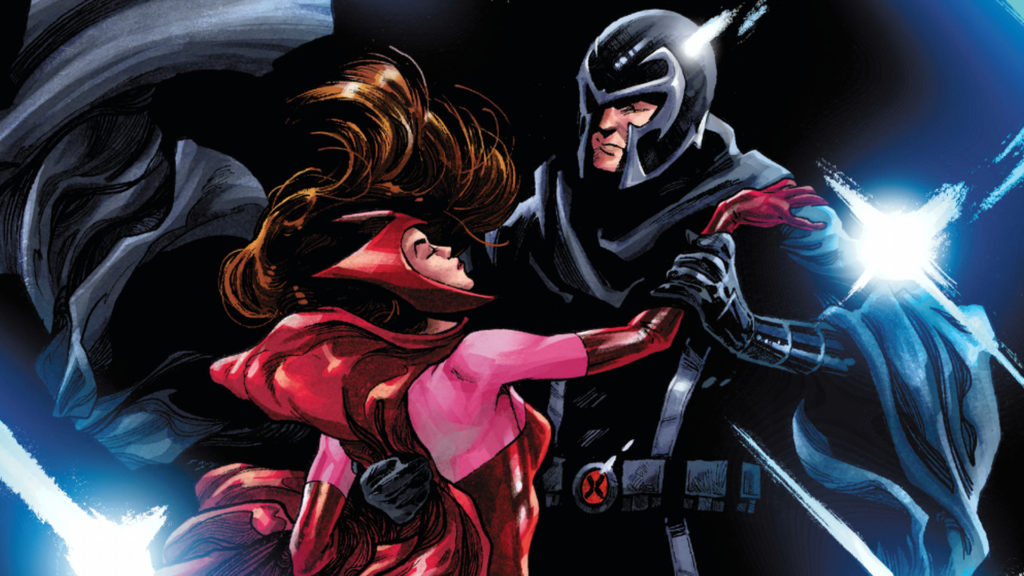
Comics Corner – Meet the X-Men’s Mutant Miracle Babies
Back when the House of X era launched, redefining the role of the X-Men and mutantkind as a whole within the Marvel Universe, it was a rebirth – both for the publishing line, and literally so for its characters. Writer and line architect Jonathan Hickman established a route to resurrection for mutants, and for re-empowerment of those who had lost their abilities in the wake of the Scarlet Witch’s infamous “no more mutants” at the end of the House of M event.
With the founding of the mutant nation on the living island Krakoa, there also came an edict: “make more mutants”. While the future-set mirror to House of X, Powers of X, teased that “make” would come to mean chimerical creations that combined the genetics and powers of many well-known X-Men, in the present day it meant for mutants to procreate, increasing the population of new mutants as well as bringing back the dead.

However, that raised an interesting conundrum for a franchise that boasts significant numbers of LGBTQ+ characters – how does a species-wide mandate to make babies work for its gay community? In this week’s X-Men: The Trial of Magneto #5, we have an answer.
The series, written by Leah Williams with art by Lucas Werneck and David Messina, has predominantly centred on the murder of the Scarlet Witch, with Magneto presumed to be the killer. We won’t spoil the twists and turns of the series here, but one of the outcomes of a story that proved to be of even greater importance than it initially seemed is that now, any mutant can be resurrected, even those who died before the Krakoan Protocols that allow such rebirths were created. Mutants can effectively reach back in time and revive their fallen.

In the aftermath of this seismic development, we get a page focusing on Northstar – Jean-Paul Beaubier – and his husband Kyle. Having spoken to Hope, one of the mutants who oversee the resurrection process, Northstar is informed that his infant daughter Joanne, who died shortly after he adopted her in the same issue of Alpha Flight where he came out as gay, would have grown up to be a mutant. As such, Joanne is added to the resurrection queue, making Jean-Paul and Kyle expectant fathers.
It’s a small but beautiful scene, just one page in a much wider X-Men story, yet it’s a groundbreaking moment. Not only were Jean-Paul and Kyle the focus of the first same-sex wedding in mainstream comics, they now get to be fathers.
As we said above, this is AN answer, not necessarily THE answer to queer mutant procreation in the Krakoan age. Just as in real life, there are many routes to gay parenthood, from adoption through to surrogacy. In the Marvel Universe, there are even more – clones, artificial wombs, and plenty of the X-Men already have children from alternate universes. It’s a certainty other avenues will be explored in futures stories – we may even see the actual genetic offspring of same-sex parents as a result of comic book science.
Yet the resurrection of Northstar’s adopted daughter, and the fact that Marvel is willing to make one of its most prominent gay couples the first to become parents to this new generation of mutant children, is both heartwarming and hugely significant. With the timing of the issue’s release, it’s a festive mini-miracle.
Comics Corner… corner
Also of note in recent queer comics is last week’s DC holiday special, ‘Tis the Season to be Freezin’. As is often the case with themed specials, this is an anthology of short stories spotlighting different DC heroes, but one tale particularly stands out – the return of the JLQ!
Again penned by Andrew Wheeler, who introduced the team in DC Pride back in June 2021, and with art by Meghan Hetrick, the story sees DC’s all-LGBTQ+ super-team gathering to celebrate the Winter Solstice. Of course, the party gets crashed by a supervillain – Minister Blizzard, using a mysterious ice-woman to attempt to freeze the entire world.

It’s a fun superhero romp, but also serves to move the burgeoning team forward and reinvent one of DC’s first queer heroes. The ice-woman in question turns out to be Sigrid Nansen, originally known as Icemaiden, and one of DC’s first openly bisexual superheroes. The character had been sidelined for years and, in her last appearance, flayed alive. Wheeler and Hetrick’s work here revitalises the character, restoring her powers, healing her body, and giving her the brand new name Glacier.

The story also sees the JLQ as a team begin to formalise its membership a little. The main roster here consists of Aqualad, Tremor, Crush, The Ray, Bunker, Traci 13, and Sylvan Ortega, under the mentorship of Gregorio de la Vega, Extraño – brilliantly framed here as the “House Mother” to DC’s young queer heroes. With the possible addition of Glacier to a more fixed line up, the JLQ is shaping up nicely. Best of all, the final page confirms that “The JLQ will return” – and we can’t wait to see where their next appearance takes them.







